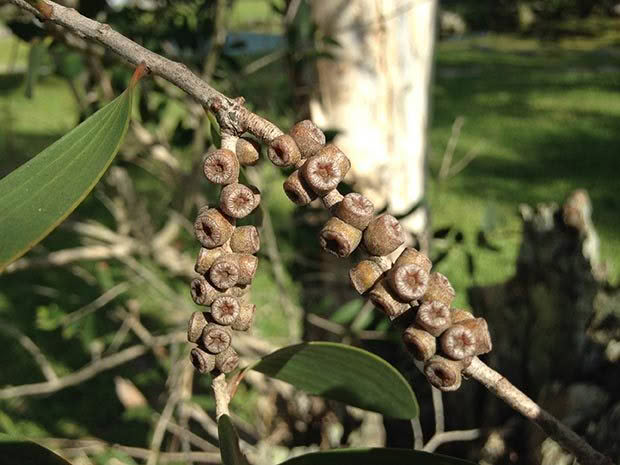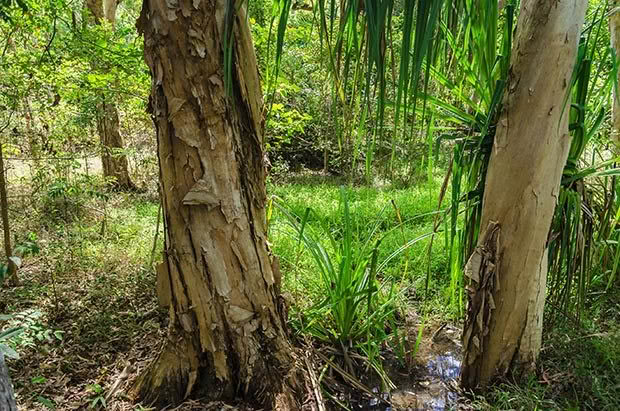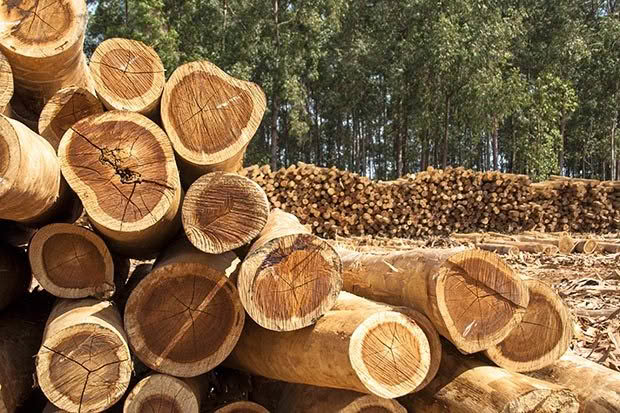10 gum trees that also make good firewood

Gum as a tree divides a lot of people. One reason is different varieties do better in different parts of the country – plant the wrong one for your area and you’ll probably lose it to frost or the wrong soil conditions.
Also, once a gum gets away it’s fairly hardy, but when it’s young it needs to be fed and weeds kept back or it may die.
But the other issue is that these are trees which can easily get away on you. If you don’t coppice or cut them down before the age of five years they can start to cause big problems.
Large gum trees naturally drop big branches during storms for stability, but that’s no comfort if it’s near a building or a vehicle, or worse a person. In Australia, gums are known as ‘widow makers’ for the number of people killed sheltering under gum trees during storms.

Eucalypts mostly grow very fast.
At five years old, most will still be a manageable height to cut down, but once they get a couple more years on them, you can be looking at a big felling operation and the cost of using a commercial forestry chainsaw and log splitter.
The roots of big eucalypts can spread a long way – up to 30m – so you don’t want them anywhere near driveways or buildings, and they will suck the goodness out of the soil if you’re trying to grow pasture or crops amongst them.
The trick for a firewood block is to plant them with another good timber/firewood species from their Australian homeland, acacia (wattles).
1. Eucalyptus botryoides, southern mahogany
Conditions: Well-drained soils.
Fast-growing, gorgeous timber and firewood tree, coppices well after 5 years.
Evidence now that it’s not as tolerant to coastal situations as first thought. Is very susceptible to sawfly, ophilemus and leaf lerp although some bio-control is now available with parasites.
2. Eucalyptus nitens, shining gum
Conditions: Dry-moist soils (not wet), will tolerate humidity, frost, cold temperatures.
Very fast-growing which puts it at risk of being blown over. Tall, hardy, can be coppiced but not as reliable as other varieties.
3. Eucalyptus ovata, swamp gum
Conditions: Wet soils.
Coppices very well from 5 years+ and will regrow from a stump several times, excellent for firewood.
4. Eucalyptus microcorys, tallowwood
Conditions: Deep moist soil including clay, not frost-tolerant.
Great wood for posts, coppices well for firewood, flowers over winter so good for bee food, dense crown and low branches make it a good shelter tree.
5. Eucalyptus muelleriana, yellow stringybark
Conditions: Well-drained soils, warmer climates.
Fast-growing, good quality timber, low tolerance to frost.
6. Eucalyptus macrorhyncha, red stringybark
Conditions: Grows well in most soils but prefers well-drained, frost and drought-tolerant.
Good quality timber, very hardy.
7. Eucalyptus fastigiata, brown barrel gum
Conditions: Prefers deep volcanic soils, shelter from wind
Grows fast, coppices well, beautiful timber for furniture or constructions above ground.
8. Eucalyptus bosistoana, coast grey box
Conditions: Fertile, well-drained soil, clay, limestone.
This is a very dense wood, excellent timber for posts, flooring etc, doesn’t like dry, exposed sites or hard frost.
9. Eucalyptus saligna, Sydney blue gum
Conditions: Free-draining moist soil, not wind-hardy.
Good coppicing tree, shade-tolerant, doesn’t like windy sites, is affected by pests/disease.
10. Eucalyptus viminalis, manna gum
Conditions: Dry to moist soil, drought-tolerant.
Good coppice tree, good for shelter on exposed, dry sites, lovely flowers for bee feed.

WHAT TO PLANT WITH YOUR GUMS
Gums often do well with acacia (wattles) as the smaller trees can live under a gum canopy, and are also good firewood trees in their own right. Wattle varieties to try include:
Acacia elata, prefers moist soils, good timber
Acacia falciformis does best on warm, fertile sites, good timber
Acacia melanoxylon, good to coppice after year 7 over several rotations, tolerates a wide range of conditions but does best on sheltered, well-drained, fertile soil, nitrogen-fixing, burns fast.
HOW TO MAKE A HERBAL FIRESTARTER
Pinecones and dried herbs such as rosemary, sage leaves, and cinnamon sticks make fragrant kindling for a winter fire.
1. Bundle dried herbs and small pinecones in a sheet of newspaper and secure the ends with string.
2. As you pile up the kindling and wood for your fire, place the herb bundle underneath with its paper ends sticking out.
3. Light the newspaper ends.
4. As the paper burns, the herbs inside will ignite and get hot enough to begin to burn the kindling.
Love this story? Subscribe now!
 This article first appeared in NZ Lifestyle Block Magazine.
This article first appeared in NZ Lifestyle Block Magazine.
